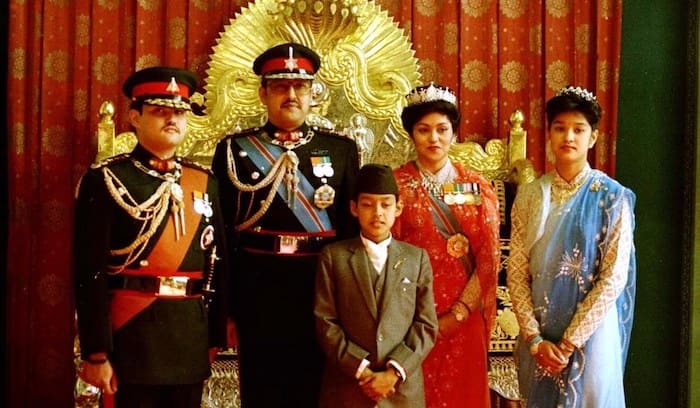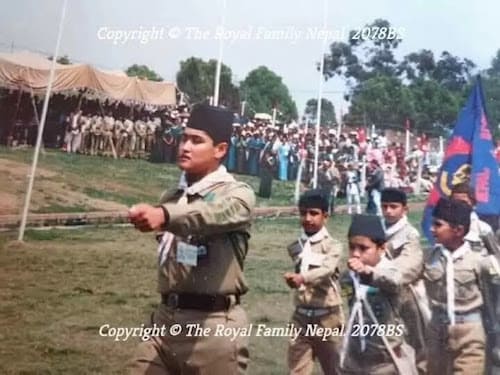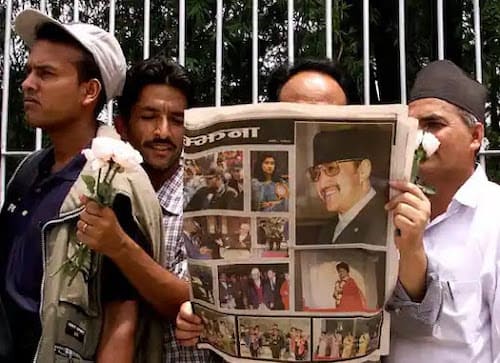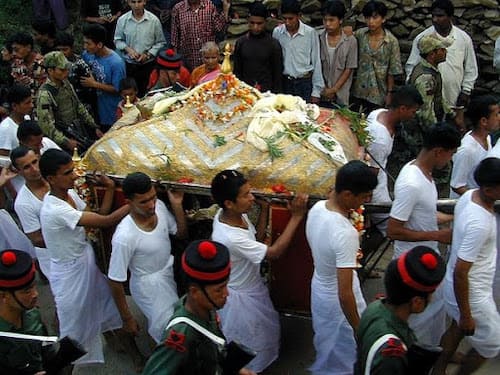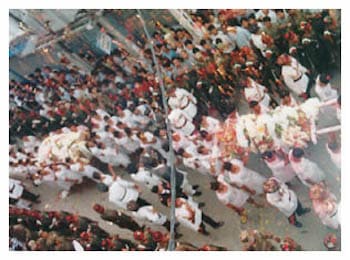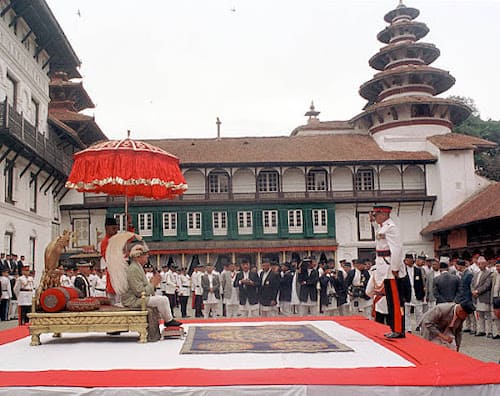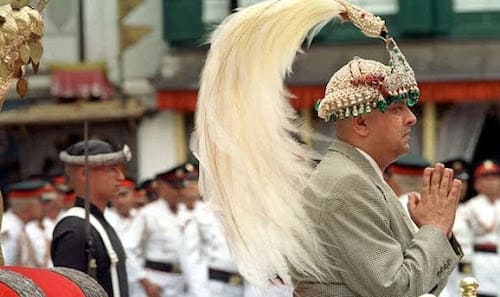The Royal Massacre of Nepal happened on June 1st, 2001 at the Narayanhiti Palace in Kathmandu. The Nepalese monarchy was brutally murdered during a family dinner party. The massacre was supposedly carried out by the Crown Prince, Dipendra, in which ten members of the royal family (including himself – committed suicide) were killed during a mass shooting.
Out of the ten family members that died during the shooting, the most notable were, King Birendra, Queen Aishwarya, Crown Prince Dipendra, Prince Nirajan (youngest son of King Birendra), and Princess Shruti. Effectively leaving no immediate heir to the throne.
The Royal Massacre in Nepal has been reported by media, and especially foreign media sources as an open and shut case – with many pointing the finger at Crown Prince Dipendra. Whereas, the claim is that in his intoxicated state, the ongoing issues with his family forbidding him from marrying, Devyani Rana, finally reached a breaking point resulting in him killing his family, and committing suicide.
However, if you ask around in Nepalese social circles. You may hear of a different, deeper and more controversial explanation for the killings that took place during the 2001 Nepalese Royal Massacre.
With eye witness accounts being recorded of the night, as well as some alarming irregularities during the events on June 1, 2001, you may also begin to question the mainstream narrative of the evening.
In this blog, I discuss the events that took place during the Royal Massacre of Nepal.
Quick Facts about the Nepal Palace Massacre:
Before we jump into the specifics of the Royal family Nepal Massacre, I want to present you with all of the main facts from the incident.
| Date | English Date: 9pm, June 1st, 2001 Nepali Date: Jeth 19th, 2058 |
| Location | Narayanhiti Palace in Kathmandu Nepal |
| Attack Type | Regicide, familicide, mass shooting |
| Claimed Perpetrator | Crown Prince Dipendra |
| Weapons Used | Colt M16A2 rifle, H&K MP5K 9mm submachine gun, Franchi SPAS-12 shotgun, Glock 19 9mm pistol |
| People Killed | Ten people were killed during the mass shooting – including Crown Prince Dipendra who committed suicide. The following people were killed during the Royal Massacre in Nepal:- King Birendra- Queen Aishwarya- Crown Prince Dipendra, elder son of Birendra and Aishwarya- Prince Nirajan, younger son of Birendra and Aishwarya- Princess Shruti, daughter of Birendra and Aishwarya- Prince Dhirendra, King Birendra’s brother who had renounced his title- Princess Shanti, King Birendra’s eldest sister, also Rani of Bajhang- Princess Sharada, King Birendra’s middle sisterKumar Khadga,- Princess Sharada’s husband- Princess Jayanti, King Birendra’s first cousin |
| People Injured | There were a total of four people that were injured and survived. The following people were wounded during the Royal Massacre in Nepal:- Princess Shova, King Birendra’s sister- Kumar Gorakh, Princess Shruti’s husband- Princess Komal, Prince Gyanendra’s wife- Ketaki Chester, King Birendra’s first cousin |
| Length of Investigation | The entire investigation of the incident lasted two weeks. The investigation was carried out internally by Nepal. Even though there were offers to help the investigation by outside sources, such as Scotland Yard. |
| Throne Succession | Crown Prince Dipendra was crowned as the King of Nepal on June 1st after his father was pronounced dead. After King Dipendra died three days later onJune 4th. After King Dipendra’s death, king Gyanendra was crowned. |
Nepal Palace Massacre – The Events of June 1st 2001
The Royal Massacre in Nepal is reported to have been carried out by the Crown Prince Dipendra. Reports show that on June 1st 2001 the Royal Nepal massacre took place at Narayanhiti Palace during a family get together. During the family get together, 10 people were murdered, and five people injured from the royal family of Nepal during a mass shooting. However, how did things escalate into that situation? Let us take a look at the events that unfolded during the Royal Massacre in Nepal.
What Happened the Night of the Royal Family Nepal Massacre?
According to the official report, the usual family get together was happening on June 1st, 2001 at the Narayanhiti Palace in Kathmandu. The Crown Prince Dipendra was responsible for hosting the event, and was drinking before the party began. Additionally, around 8:19 pm Dipendra calls his aide to get him cigarettes that were to be mixed with hashish as well as another unnamed ‘black substance’.
During the party, Dipendra was visibly drunk and was misbehaving with guests when King Birendra asked his son to leave the party, which his brother Prince Nirajan and cousin Prince Paras, helped him to his room, as reports say that Dipendra was to drunk to even walk properly. After reaching his room, his aides check in on him. They find him on the floor and trying to take off his clothes. They help him take off his shirt, and get him up so he can use the bathroom. While in the bathroom, the aides report hearing the Crown Prince throwing up.
After Dipendra returns to his room, he orders his aides to return to their rooms and go to sleep for the night. While the Crown Prince was in his room, he called his girlfriend Devrani Rana around 8:32 pm, and informed her that he was fine and would be going to sleep now.
After the phone call, the timing and order of events are unclear. However, Prince Dipendra gets dressed in army fatigues, and tactile gear. His aide then saw Dipendra leaving his room with guns in hand, heading towards the billiards room where the party was being held.
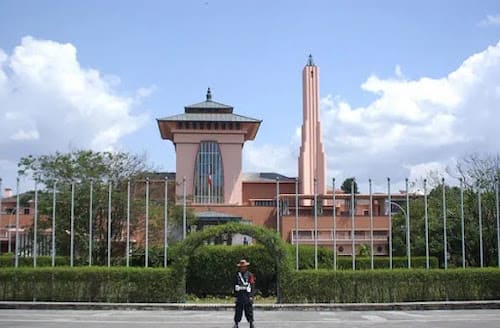
Once Dipendra reaches the billiards room, he begins opening fire at the ceiling. A small discussion follows between the Prince and King, and then, Dipendra shoots his father in the neck and stomach. He also begins shooting other people in the room, as some guests begin to try to hide.
Prince Nirajan and Queen Aishwarya flee the room and once again encounter the Crown Prince. Dipendra then shoots his mother and younger brother. After the chaos unfolds, it is reported that the Crown Prince then shoots himself through the left part of the brain, in the attempt to commit suicide.
Dipendra was not initially pronounced dead. As he was taken to the hospital and was alive for three more days in a coma. During this time, Dipendra was crowned the King of Nepal. He eventually died on June 4th 2001, and Gyanendra became King of Nepal.
During the event, 10 total members of the Royal Family were killed – including Dipendra, who committed suicide. Moreover, five other people were wounded during the event. The mass shooting was a devastating event for a country that was already in political turmoil because of the Civil War in Nepal, which had been ongoing since 1996.
The events of the night were investigated and reported to be an open and shut case, with everyone pointing the finger at the Crown Prince. Stating he was unhappy with the situation between his parents and his desire to marry his girlfriend, Devrani Rana. Let’s now take a step back and have a look at what has been reported as the main reason the Crown Prince carried out the mass shooting: his love for Devrani Rana.
Curious about other crazy stories in Nepal? Then make sure to check out my blog about mysteries in the Himalayans!
Crown Prince Dipendra’s love life:
It is said that the Crown Prince Dipendra was having issues with the King and Queen because of a marriage dispute. Whereas, Dipendra was having issues with his mother, against his choice in bride: Devyani Rana.
The love story began in England, where Dipendra’s Guardian was Sir Jeremy Bagge. Bagge’s son was also a student at Eton, and was friends with Devyani Rana. He introduced the two, and Dipendra quickly fell for Devyani Rana. However, the Queen Aishwarya did not approve of the relationship or her son having an inter caste marriage with Devyani. The difference in caste, however, was more than likely not the only issue with the marriage, as the Queen herself, was Rana as well.
Another potential issue behind the Queen refusing to let the marriage happen is that of Devyani Rana’s family history. Whereas, coming from a family that was claimed to be better off than the Royal Family themselves, Devyani’s family had a history of politics. Her father, Pashupati Shamsher Jang Bahadur Rana held high political positions including being minister of several divisions in Nepal. Additionally, her ancestors also were part of the Rana Dynasty that were Prime Ministers in Nepal, while the Royal Family was reduced to figure heads of the country.
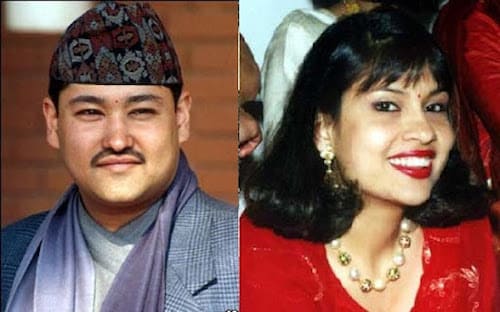
Even though the Queen disapproved of the relationship between the Crown Prince and Devyani, Dipendra continued to see her secretly. Whereas, one of their usual meeting locations was Fire and Ice Pizzeria in Thamel for their favorite salami pizza. These continuous pizza dates, secret meetings, and phone calls, angered the Queen and King. Whereas Late King Birendra, even threatened to pass up Dipendra for the throne if he disobeyed his mother’s wishes.
The arguments, and objections to the marriage, are reported to have led to a large argument in the time leading up to the Royal Massacre in Nepal. And, according to news sources, like the New Yorker, suggest that the refusal of the King and Queen of Nepal, to consent to the marriage was the cause of the massacre of the royal family in Nepal.
As you can see, mainstream media around the world took hold of the ‘love story’ and ran with it. In a matter of a few days, everyone was convinced that it was Dipendra that killed his family, and did it for the sake of love. However, that is not the only theory to explain the events of the Royal Massacre of Nepal.
Let’s have a look at another explanation.
Royal Massacre of Nepal: Conspiracy Theories? Or Truths?
There were many different conspiracy theories that began to circle around the streets of Kathmandu and Pokhara, as well as the hillside villages. It was hard for Nepalis to believe that their beloved Prince Dipendra, someone well respected in Nepalese society, could have committed such a horrible act.
Nepali people began to wonder if there was foreign political interference. Whereas, Prachanda, the chairman of the Nepalese Maoist Party, even stated during a public gathering that the Nepal Royal Family Massacre was planned by the Indian intelligence agency Research and Analysis Wing (RAW) or the American Central Intelligence Agency (CIA) by the Indian intelligence agency Research and Analysis Wing (RAW) or the American Central Intelligence Agency (CIA). Whereas, eye witnesses not related to the Royal Family, claim to have seen multiple people wearing masks that looked like Dipendra, carrying out the murders.
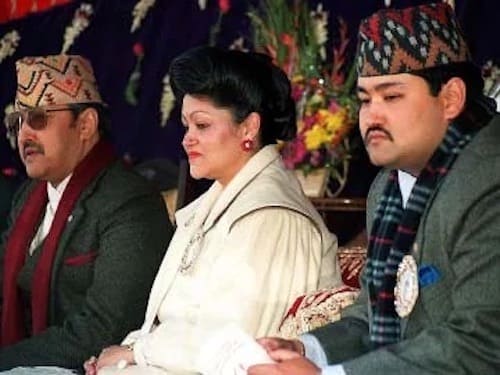
Another conspiracy theory that was linked to the Royal Massacre was that King Birendra’s younger brother, Gyanendra, was not present at the party, and would have been able to ascend the throne, only if the King, and his two sons were removed. With Gyanendra being away during the event that night, and that both his wife and son Prince Paras survived the shooting further fueled these claims.
Of course, the only people that know what actually happened that night were the people present, it will be some time before anyone is able to speak up about the events, for fear of their own life.
There are a vast number of other conspiracy theories from that night. One such source that recounts the events of the night is Raktakunda, which is an eyewitness account of a palace maid that was present during the shooting. Additionally, highlighted in research by Micheal Hutt, and outlined in a book named Tyo Kahalilagdo Rat (That Terrifying Night), which was published in 2007, a list of rumors and conspiracy theories was reported. A few of these conspiracy theories are as follows:
Royal Massacre of Nepal: Conspiracy theories from Tyo Kahalilagdo Rat (That Terrifying Night)
The information below highlights some of the rumors and conspiracy theories that were being discussed following the 2001 Nepalese Royal Massacre, and highlighted in the book Tyo Kahalilagdo Rat (That Terrifying Night):
- Prince Paras, Dr Rajiv Shahi and some army generals had conspired to selectively murder all members of the ‘liberal’ camp inside the palace
- The killings were the work of an individual who wore a mask to disguise himself as Dipendra
- The bullets that killed the royals were actually fired by palace security guards
- Dipendra was shot in the back, so he could not have committed suicide
- Dipendra was wearing national costume when he was taken to hospital, so it was not true that he had donned combat dress
- Prince Paras Shah broke and threw away Dipendra’s (hospital) ventilator for Dipendra’s life support
- Hundreds were killed in the Royal Palace that night and the purpose of the curfews was to allow the disposal of their bodies
- Films were removed from ‘automatic movie cameras’ at the scene of the massacres and destroyed
- The king and queen had suffered blows to their heads from a sword and this was why no postmortems were conducted
- The doctors at the hospital were told what to write in their reports by army generals
- Gyanendra’s absence from the family gathering proved that he was behind it; it is not true that he was in Pokhara at the time
- The massacre had been planned by the Chief of Army Staff and a military coup had taken place (due to Nepal’s ongoing Civil War the Army wanted to seize power)
- It was not true that Princess Komal had been injured; in fact she had been drugged and put to sleep
- Dr Upendra Devkota [Nepal’s most famous neurosurgeon] had disappeared
- Prince Paras had been sent to England immediately after the massacre
- Soldiers and police personnel were out and about in Kathmandu, dressed in plain clothes, to spread terror
- Dipendra’s bodyguard had fled and several of his friends had been arrested
- The scene of the massacre had already been cleaned up to remove all the evidence
- The public water supply and milk had been poisoned in Kathmandu
- The Prime Minister and leader of the opposition were in army custody.
- The ADCs (aides-de-camp) of Birendra and Dipendra had both been murdered
Conspiracy Theories and the Investigation of the Massacre of Nepal’s Royal Family
Some of these conspiracy theories have neither been supported nor refuted. The evidence that was gathered during the Probe Commission for the Massacre of Nepal’s Royal Family two-week investigation, provides a peek into the events that occurred on June 1st, 2001 at the Narayanhiti Palace in Kathmandu Nepal.
However, Nepali researchers, and academics from around the world, still questioned whether the probe was successful and conducted correctly. Whereas in an article that was published in the: HIMALAYA, the Journal of the Association for Nepal and Himalayan Studies, the researcher highlights downfalls during the investigation and the misuse of media to spread misinformation, and to block out the truth of what happened in the Royal Palace Massacre. We may never know what happened that night at the Narayanhiti Royal Palace, until, or if more information gets released.
One final explanation for the events of that night, dates back to the 18th century. It is the legend of Prithvi Narayan Shah and a sage.
Royal massacre of Nepal: An ancient prophecy fulfilled?
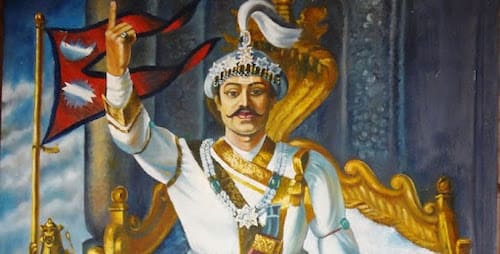
Behind the Royal Family Massacre, is an ancient prophecy that people believe to have confirmed the fate of the Shah Dynasty as soon as it started in the 18th century. Prithvi Narayan Shah, who was the Gorkha King, and responsible for uniting the country, was traveling to the Kathmandu Valley when he came across a sage in the forest.
The sage was hungry and Prithvi offered him yogurt to eat. The sage then ate the yogurt and regurgitated it back into the bowl, blessing it, and then returning it to the king to eat. The king, disgusted, threw the bowl down, covering his 10 toes with yogurt. The king’s actions offended the sage, who then states, “Just as your 10 toes are covered in yogurt, so will your dynasty fall after 10 generations.”
The prophecy of the sage did come true. With King Birendra, the 11th ruler of the Shah dynasty, Prithvi Narayan Shah, found his direct descendants, and the entire Shah dynasty crumbled to an end. After a short period of civil and political unrest, the Shah dynasty officially came to an end when the monarchy was abolished in Nepal, on May 28th 2008. Nepal, by the newly elected constituent assembly, declared Nepal the Federal Democratic Republic, and thus, effectively ending the rule of the 240 year-old Shah Monarchy.
Photos of the Nepalese Royal Massacre:
There does not seem to be any official photos from the event available online – or perhaps anywhere, anymore. The photos below, show the Nepalese Royal Family, and a little bit of insight into who they were.
Documentary on Royal Massacre of Nepal:
There are a few different documentaries depicting and explaining what happened during the Royal Massacre. One of the most watched is Zero Hour’s dramatization of the events. You can watch the episode on Amazon Prime: A Royal Massacre – Nepal. Another documentary on the Royal Massacre of Nepal, can be watched below:
Nepal Massacre Nepal Books:
If you are looking to read more about the Nepali Royal Massacre, you can take a look at a few of my favorite books that cover the incident. One of the best books regarding the incident is called Raktakunda, which is an eyewitness recap of the night, and provides insight into the lives of the Royal Family. Sadly it is only in Nepali though. The following are books on the Nepal Royal Massacre in Kathmandu:
| Book Title | Page Count | Language |
|---|---|---|
| Kay Gardeko? The Royal Massacre in Nepal | 111 | English |
| Love and Death in Kathmandu: A Strange Tale of Royal Murder | 336 | English |
| Massacre at the Palace | 253 | English |
| Raktakunda | 138 | Nepali |
| Maile Dekheko Darbar | 642 | Nepali |
If you are interested in getting any of these books, check out Booksmandala online, or visit Nepal Mandala Book Shop in Pokhara!
